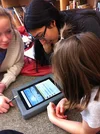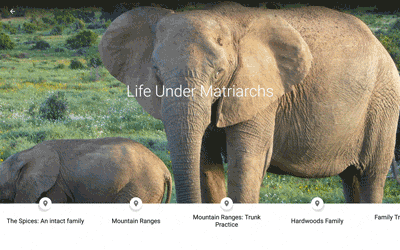Showcasing creativity tools using 3D videos, maps and music at SXSWedu
Editor's note: If you’ll be in the Austin area for SXSWedu, come visit the Google Fiber Space (201 Colorado Street) to attend a range of sessions on innovation in the classroom on Monday, March 7 and Tuesday, March 8. See the full schedule of sessions at the Google Fiber Space and stay tuned for more posts over the next few days about other session topics and presenters.
If SXSW is about emerging talent in the film and music space, SXSWedu is the convergence of educational creativity and social change. At this year’s South by Southwest EDU (SXSWedu) conference, we’ll be there highlighting some unique ways schools are truly changing what it means to get an education by giving students the tools to think creatively and carve their own learning path.We talked with three educators and technologists who will be giving sessions in the Google Fiber Space next week: Bill MacKenzie on how his students are creating a 360-degree virtual reality experience; Emily Henderson on expanding the classroom walls to take field trips across the world; and Vincent Giersch on creating music in a collaborative way.
Students pursue their passions with virtual reality videos
When students used virtual reality in the classroom for the first time, they leapt out of their seats and were transported to a different world. But Upper Grand District School Board took the experience one step further by having students create their own virtual reality experiences. Using a Theta 360-degree camera, students in grades 6 through 8 create videos that encourage them to think creatively and develop a new perspective on the video development process, such as storyboarding with 3D imagery.
The videos allow students to give parents and others an inside view of what it’s like to go to school at Upper Grand District. Students have created documentary-type videos showing students playing dodgeball in PE class, interacting with teachers in class and walking down the halls during break. They also have created videos that benefit the community as a whole. For example, Bill MacKenzie, IT and Program Liaison at Upper Grand District School Board, responsible for developing IT strategy and training teachers how to use technology in the classroom, wanted to convince the board of trustees to invest more in parking lot safety. Students created a 5-minute video using time lapse photography to show an hour of cars coming and going during morning drop-off and afternoon pick-up, and in essence, transported the trustees to that moment in time.
“Google Cardboard gives an immersive experience for people who can’t physically be there,” MacKenzie says. “We ask kids, ‘What’s a problem you want to solve?’ and empower them to put their thinking caps on and find a solution using technology.”A global classroom that encourages curiosity and positive change
As students use technology to give them a global perspective, it’s clear how important it is to increase students’ universal awareness and love for the environment. Maps and pictures from around the world encourage students to think about places from a different perspective, sparking curiosity and engagement.

With Google Expeditions, students are able to take immersive virtual reality field trips to the farthest corners of our planet. For example, students in the Samburu Expedition traveled to north-central Kenya to learn about the unique qualities of elephant families and how harmful poaching is to the elephants and ecosystem.
Creating new music scores and performing them together in real time
As the classroom becomes more collaborative, music students are turning individual projects into group projects using software called Flat for Education. When students compose together, they share their knowledge by combining their music creation ideas and learn from each other’s work. For example, a small group of students can write the parts for their own instrument using the collaborative music notation editor Flat and then perform the end result of individual efforts together.
“When we created Flat for Education, we finally provided the easiest tool to help students learn how to compose together and allow them to create their own music,” says Vincent Giersch, CTO and co-founder of Flat. “We want students to be able to make magic and learn in a way that is engaging for them.”
If you’ll be in the Austin area this week, come visit us at the Google Fiber Space to attend a range of sessions on innovation in the classroom. See the full schedule of sessions and stay tuned for more posts throughout the week.






